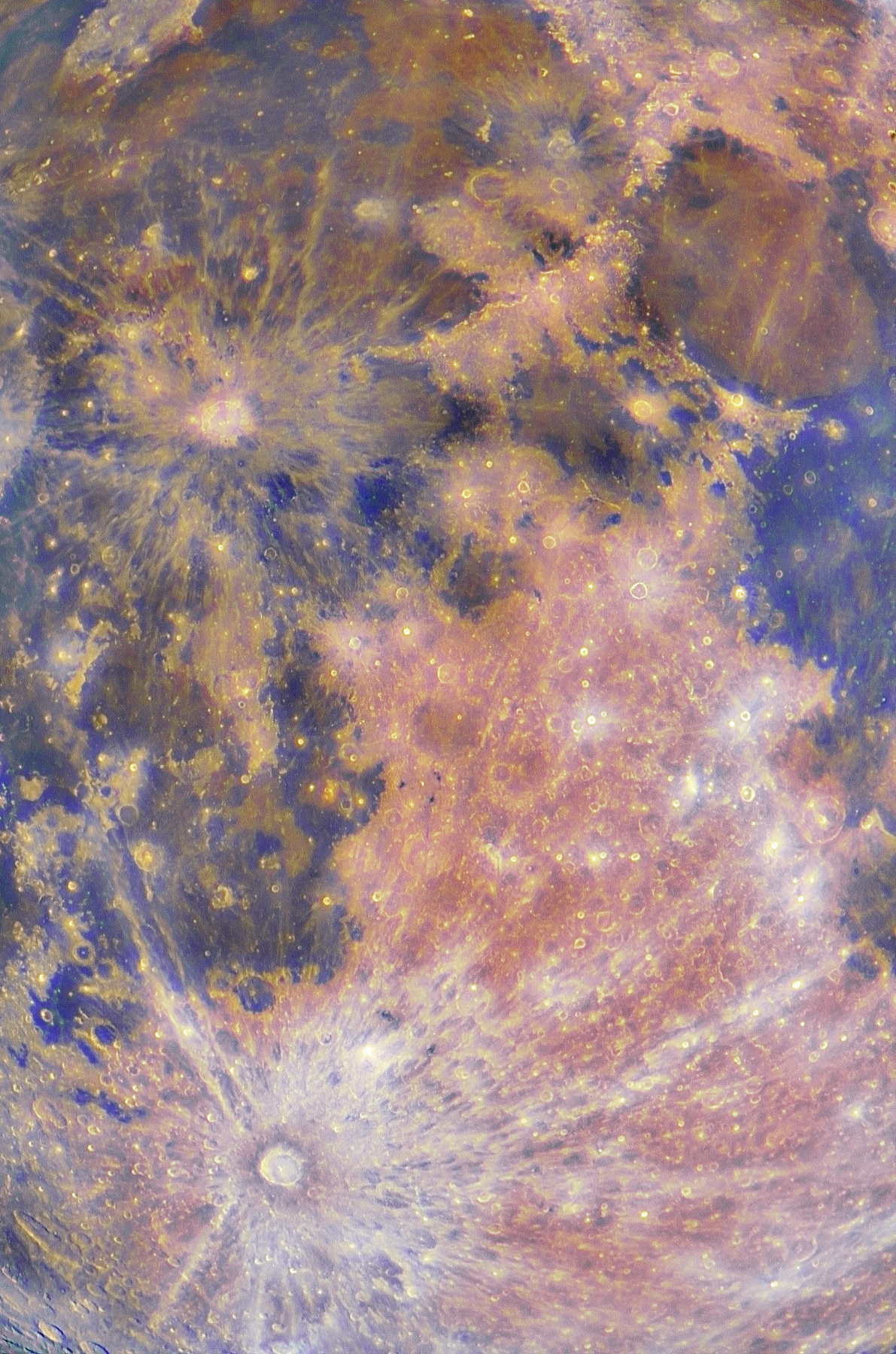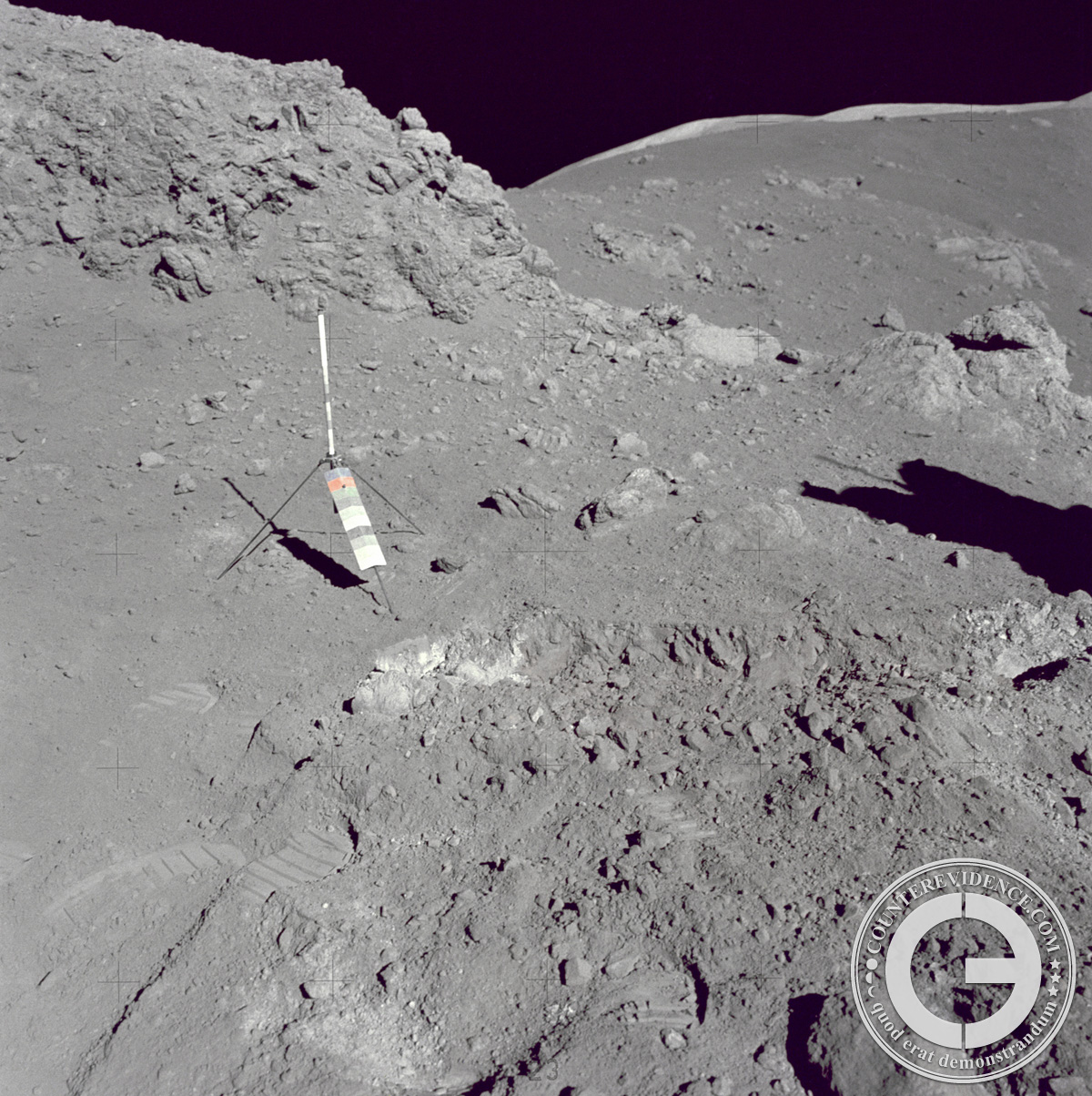It looks like you're using an Ad Blocker.
Please white-list or disable AboveTopSecret.com in your ad-blocking tool.
Thank you.
Some features of ATS will be disabled while you continue to use an ad-blocker.
share:
reply to post by EllasArchaiaDynamis
Awesome, thanks for sharing! The colours seen in any particular image like this one also depend on the photographic equipment and processing used, and the lunar highlands (iron-poor) generally come out in hues of pink and yellow.
Here's an article posted by Manchester Astronomical Society, including a colour map of the Moon published all the way back in 1967: www.mikeoates.org...
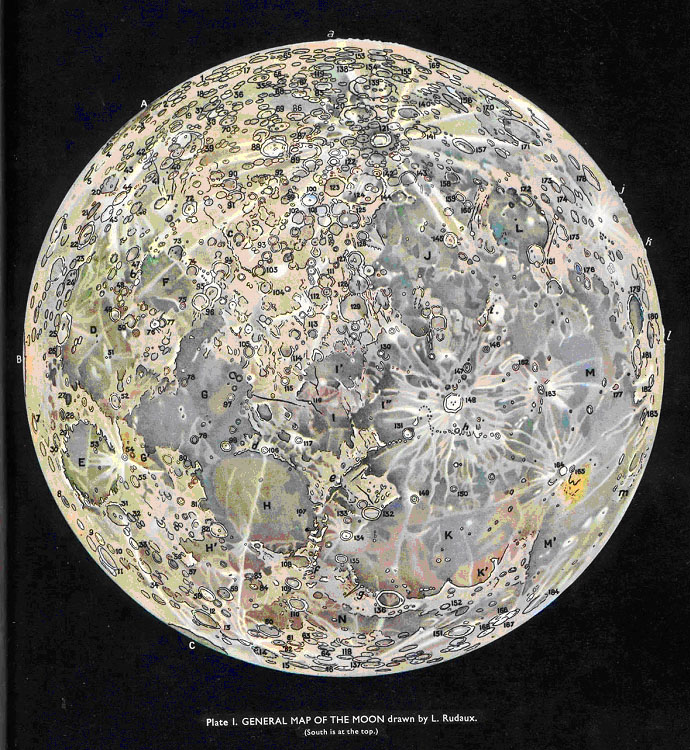
So colour of the Moon is nothing new either; anyone seriosuly interested in moon observation would have learned about this. None of that "NASA telling people the Moon is grey"
Awesome, thanks for sharing! The colours seen in any particular image like this one also depend on the photographic equipment and processing used, and the lunar highlands (iron-poor) generally come out in hues of pink and yellow.
Here's an article posted by Manchester Astronomical Society, including a colour map of the Moon published all the way back in 1967: www.mikeoates.org...

The most colourful region is Wood's spot, an area adjacent to the crater Aristarchus. Visually it is vaguely yellowish. In 1922, Wood recorded it as having a spectral reflectivity similar to the sulphurous deposits around volcanic regions on Earth. Colour enhanced digital images show it as a dirty yellow, by far the strongest colour shade on the earthward face of the moon.
Between Aristarchus and Herodotus, the Portuguese observer, Filipe Alves, distinctly shows a bluish area. He published an article on lunar colour and digital remote sensing in Sky&Telescope, July 2005.
So colour of the Moon is nothing new either; anyone seriosuly interested in moon observation would have learned about this. None of that "NASA telling people the Moon is grey"
wildespace
So colour of the Moon is nothing new either; anyone seriosuly interested in moon observation would have learned about this. None of that "NASA telling people the Moon is grey"
NASA is not telling people, it's showing people that the Moon is grey. Perhaps the Earth's atmosphere changes its color or maybe human eye or film/ccd are not very sensitive to colors when looking at very intense reflected light. To me the pictures from JR are very realistic looking in terms of portraying an extraterrestrial landscape. Looking forward for more photos from the Chinese probe.
mrkeen
wildespace
So colour of the Moon is nothing new either; anyone seriosuly interested in moon observation would have learned about this. None of that "NASA telling people the Moon is grey"
NASA is not telling people, it's showing people that the Moon is grey.
Does it really? solarsystem.nasa.gov...
They even added colour to the B&W LRO images to make the animation below:
www.youtube.com...
Granted, they do show a lot of B&W photos of the Moon, but so do many other agencies/media publications/photographers/everyone else. It's one of the unfortunate facts that for some reason photographers decide to make their Moon shots B&W. (although one reason for B&W images is that a telescope with a CCD without RGB filters was used)
Anyway, why do we need to rely on anything NASA says? You can go out and look for yourself, take photos, use image processing to bring out the colours, etc.
Perhaps the Earth's atmosphere changes its color or maybe human eye or film/ccd are not very sensitive to colors when looking at very intense reflected light.
It's mostly due to the colours being very subtle. Can't blame the atmosphere as we have many colourful images of space. Lunar light isn't any more intense than asphalt under sunlight on a clear day.
edit on 21-12-2013 by wildespace because: (no reason given)
Colors on the moon? It depends on who you ask!
Here's the Apollo 15 Jim Irwin anecdote on the colors he saw on the "moon"
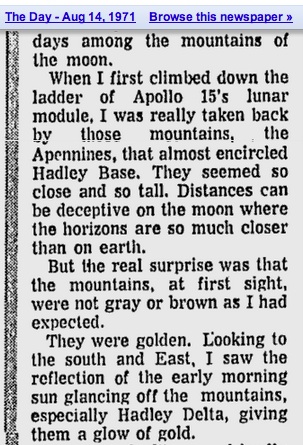
Here's the Apollo 15 Jim Irwin anecdote on the colors he saw on the "moon"

Here are some coloured rocks spotted by Apollo 15 guys:
Bluish rock www.hq.nasa.gov...
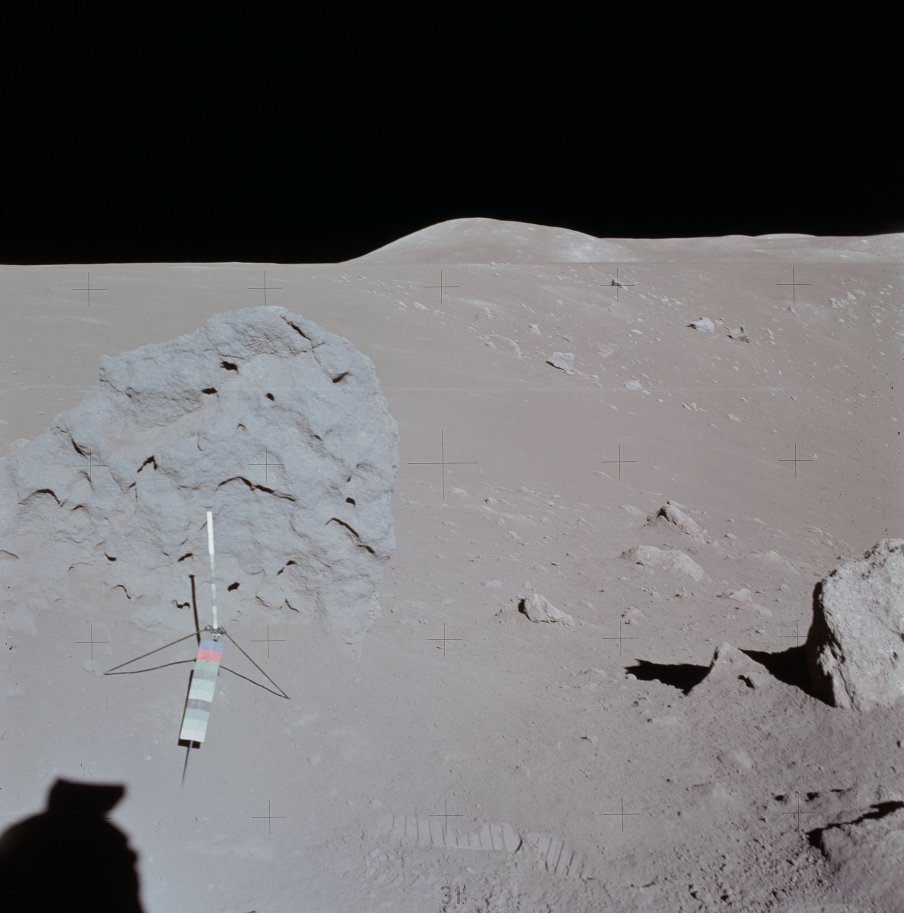
Greenish rock www.hq.nasa.gov...
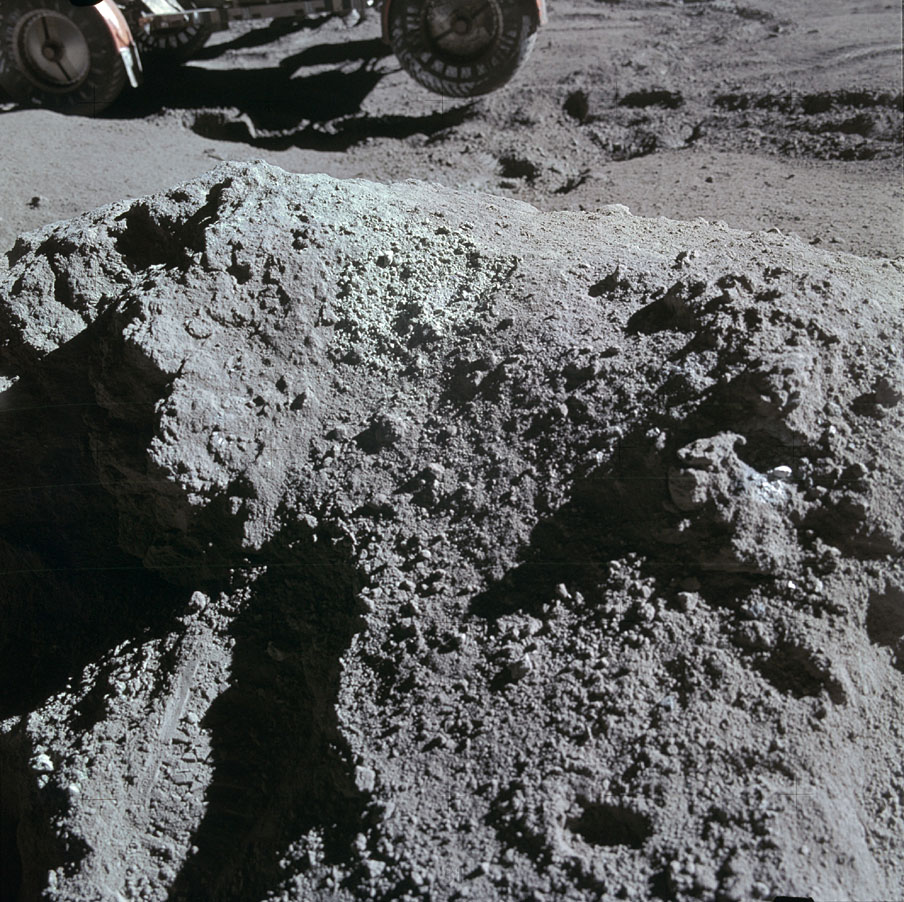
Sample of the above rock www.lpi.usra.edu...
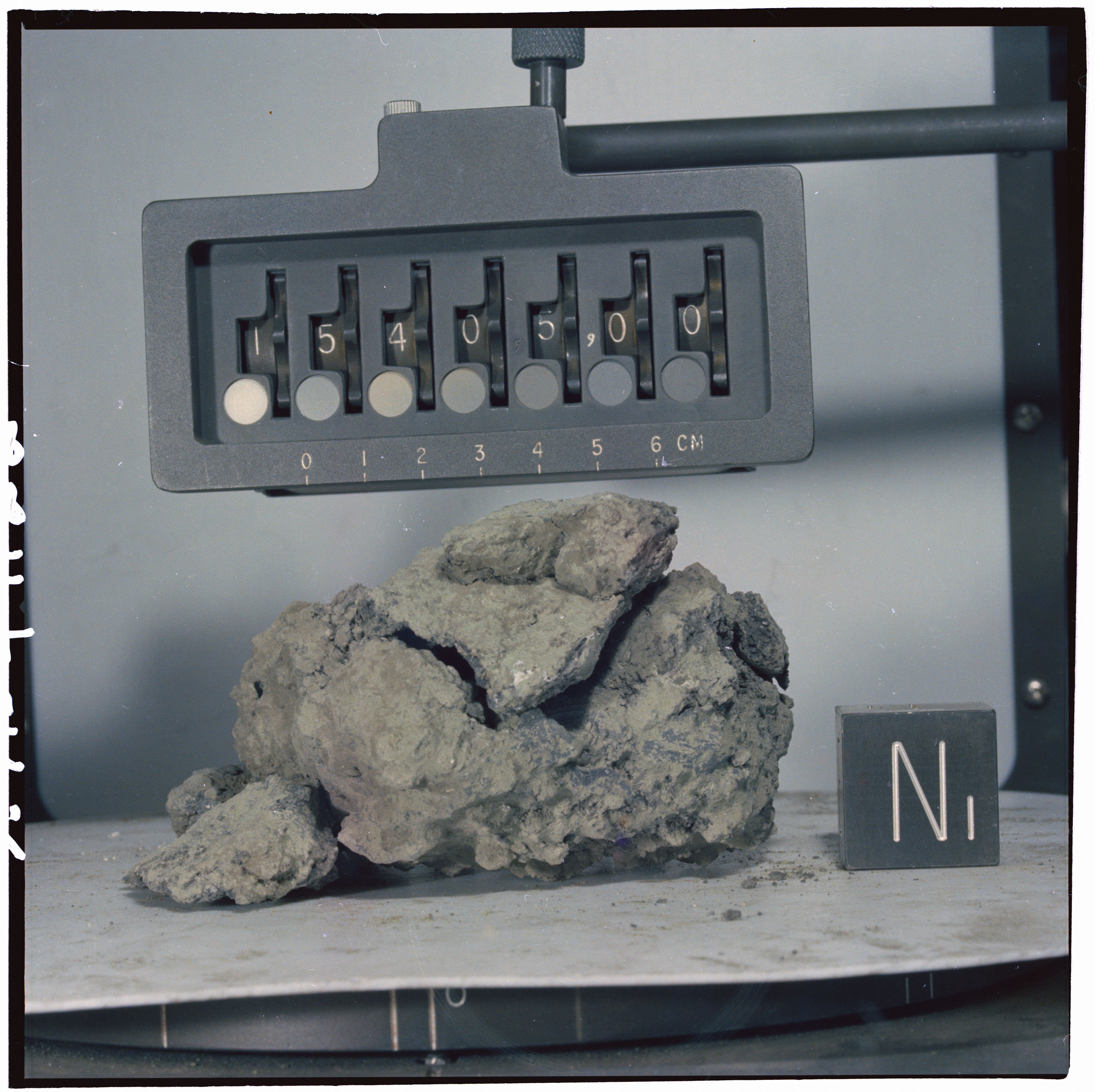
Multi-coloured rock from Apollo 17 www.hq.nasa.gov...
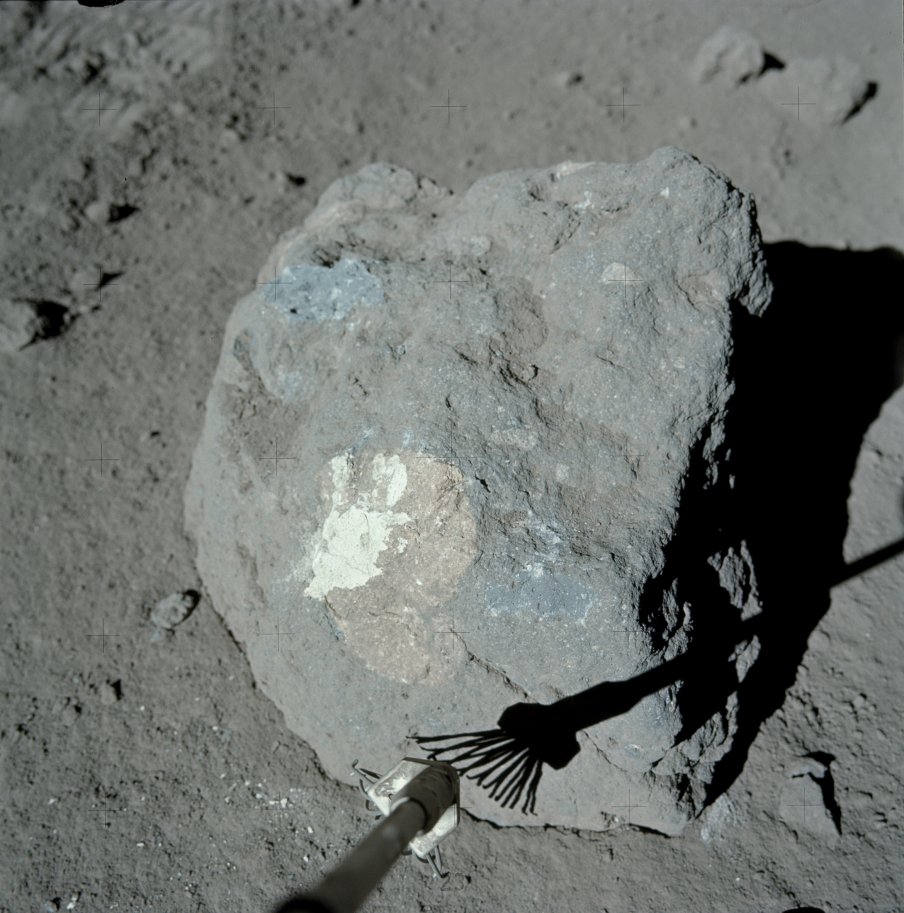
Source: the-moon.wikispaces.com...
Bluish rock www.hq.nasa.gov...

Greenish rock www.hq.nasa.gov...

Sample of the above rock www.lpi.usra.edu...

David Scott: (in july 1971 commander of Apollo 15)
"Can you imagine finding a green rock on the Moon? Think about that. We'd never had any green rocks in training. Nobody'd ever said anything about green rocks - orange, or anything - and all of a sudden you're sitting there and, you find a green rock! I missed it; Jim (LMP James Irwin) saw it. I didn't see it; and then I saw it; and it was really green.
Multi-coloured rock from Apollo 17 www.hq.nasa.gov...

Source: the-moon.wikispaces.com...
The Moon's surface is composed almost entirely of two environments which can each be found here on Earth. This isn't surprising from the current
theory about moon formation which is that Proto-Earth was impacted obliquely by a Mars sized celestial body known as "Theia". After the impact
materials from both Proto-Earth and Theia were mixed together. The portions which were not at orbital velocity were drawn back to Earth and form the
planet we know today. The materials which were at orbital velocities eventually accreted into the moon as we know it today. But enough of a cosmology
lesson and back to the colour. One of the previously mentioned environments is a rock called anorthosite, which is comprised primarily of plagioclase
feldspar with only minor mafic constituents and is therefore white in colour. The darker spots you see are Maria basalt, and KREEP basalt (which
stands for K-potassium, REE-Rare earth elements, and P-phosphorus) as well as regolith (blasted chunks of rock) accumulated from the constant
bombardment of the lunar surface. These rocks can be extremely dark grey, but are typically black. So when you see "The man in the moon" the white
parts are anorthosite, and his dark eyes, mouth, and such are basalt.
The question of the real lunar surface colour has been solved comletely years ago.
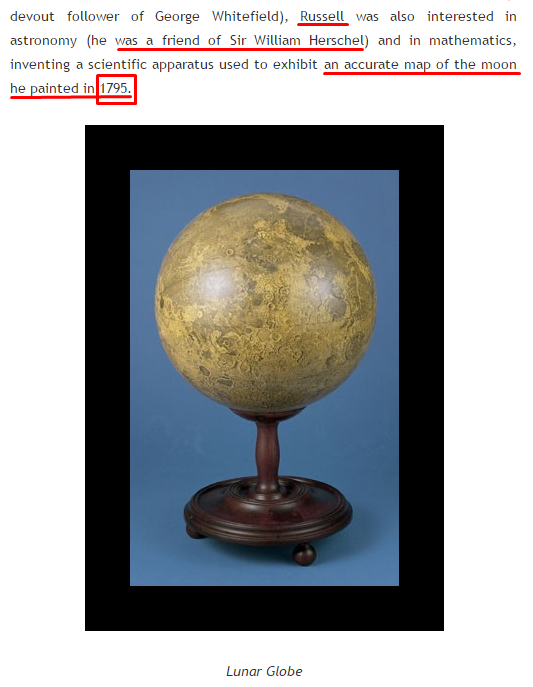

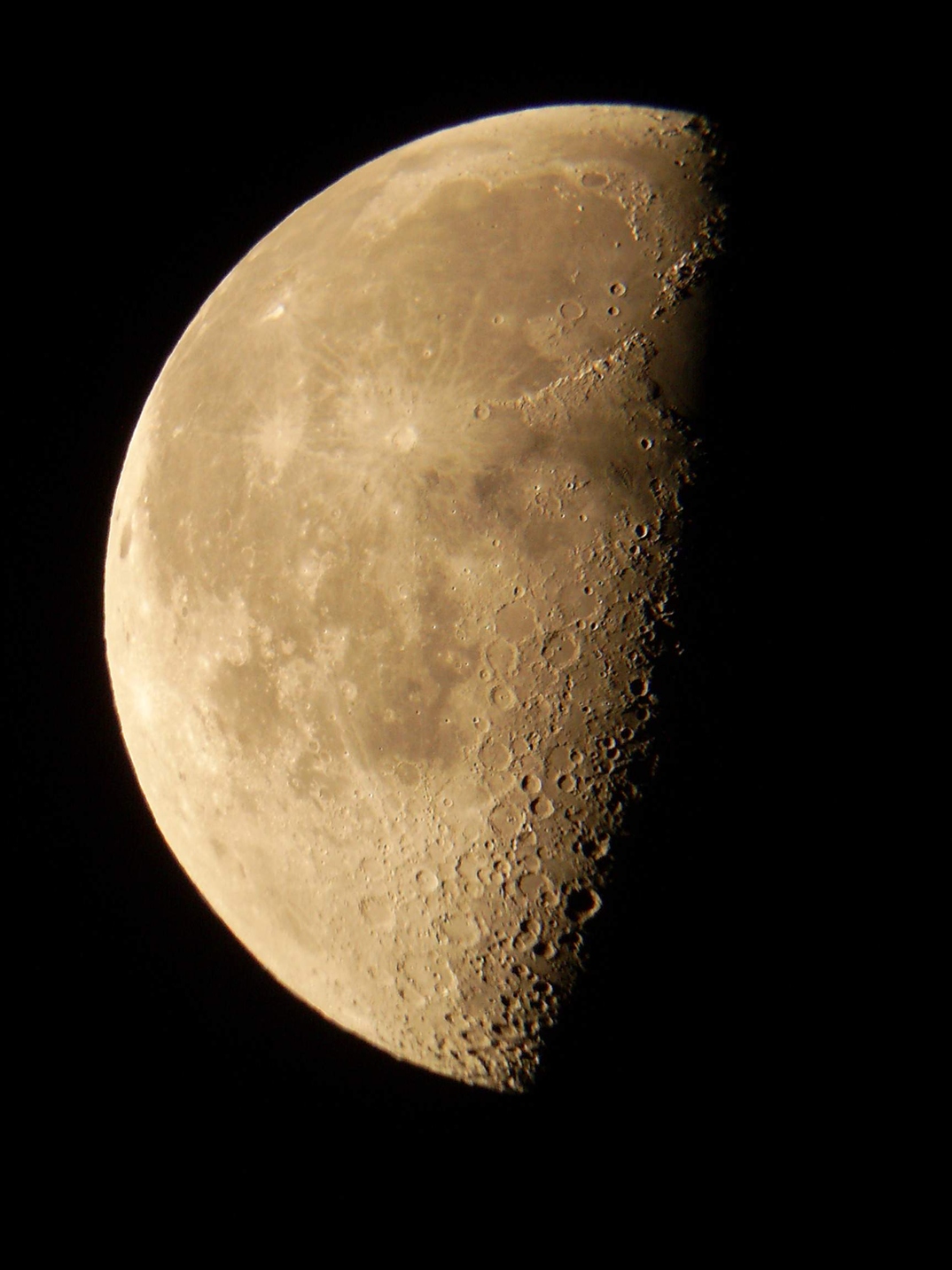
Knowing that it's quite rediculous to see Apollo programm emblems, wich started with dull cementoid coloured moon surface
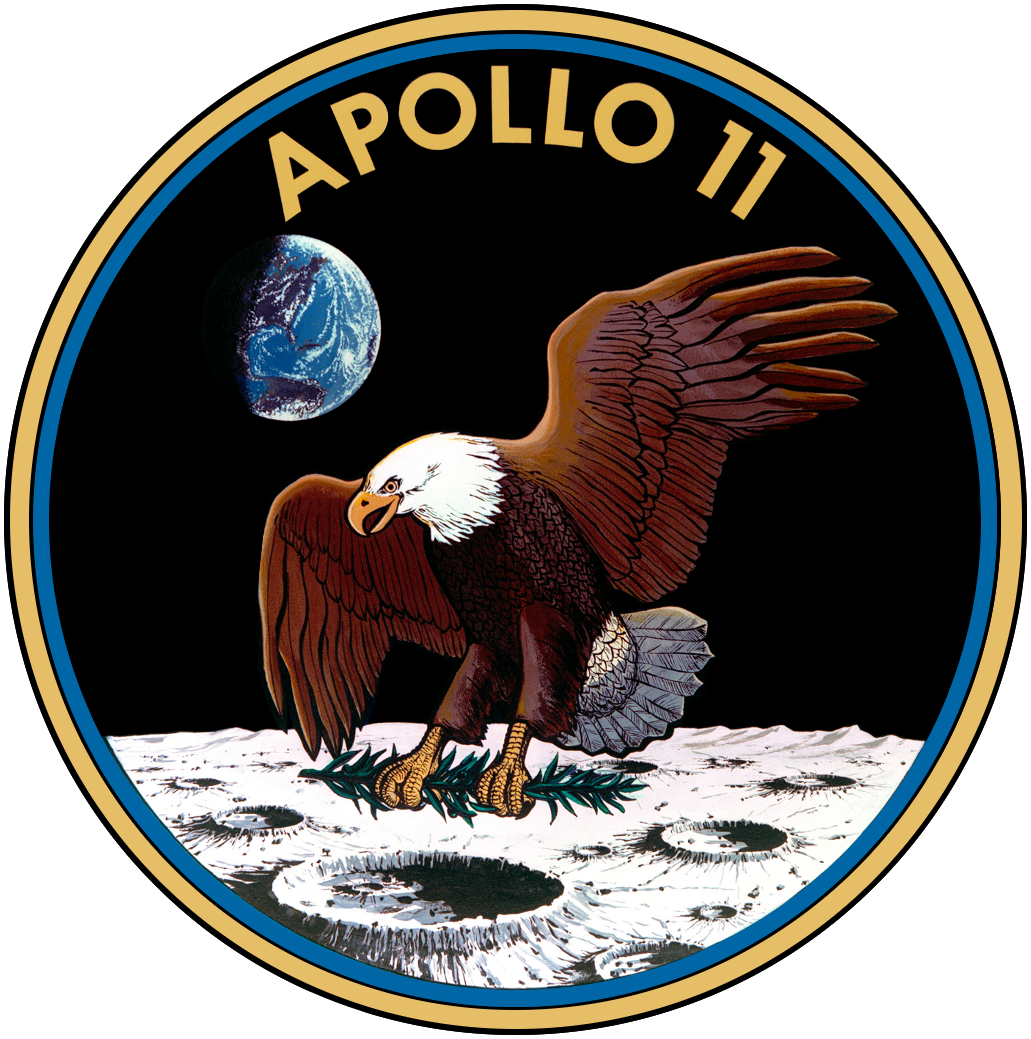
and finished with nearly right tint at the end
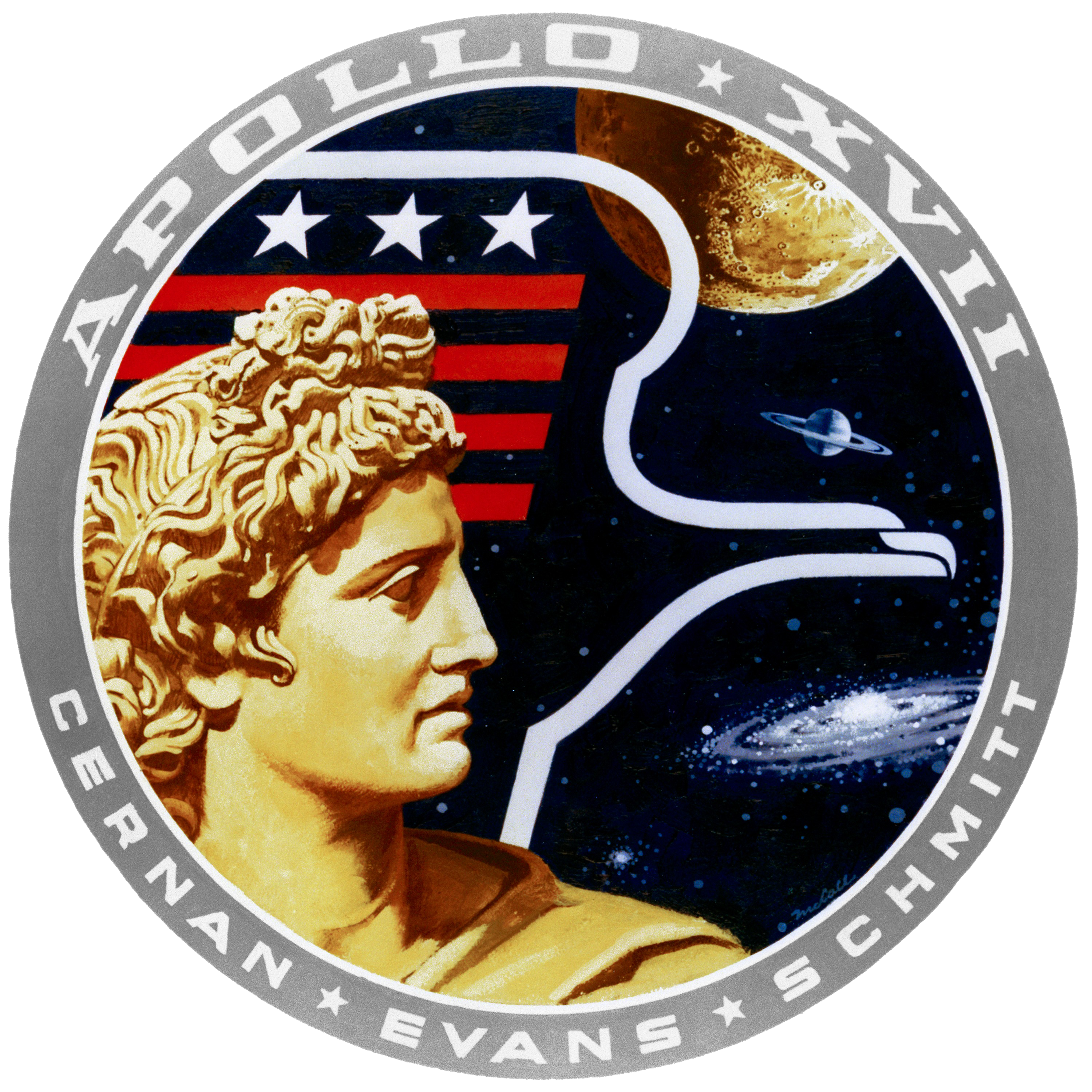
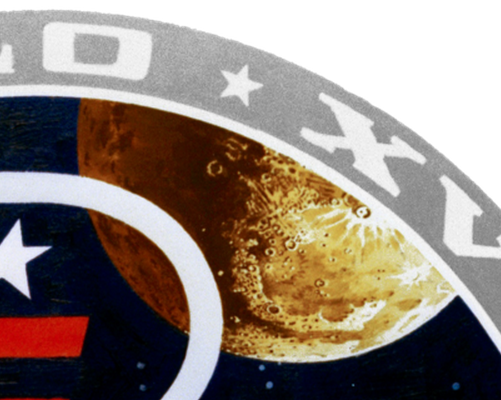
And noting but Homeric laughter can be caused by feverish attempts to repaint so called "authentic lunar colour photographs", like this
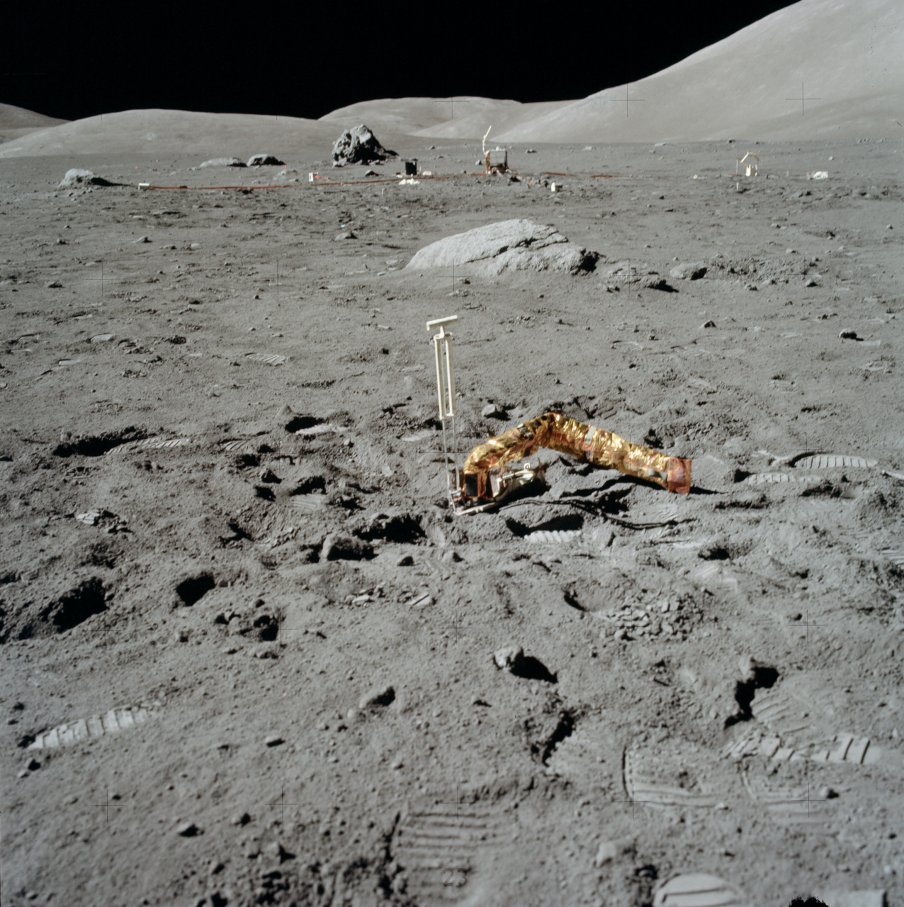
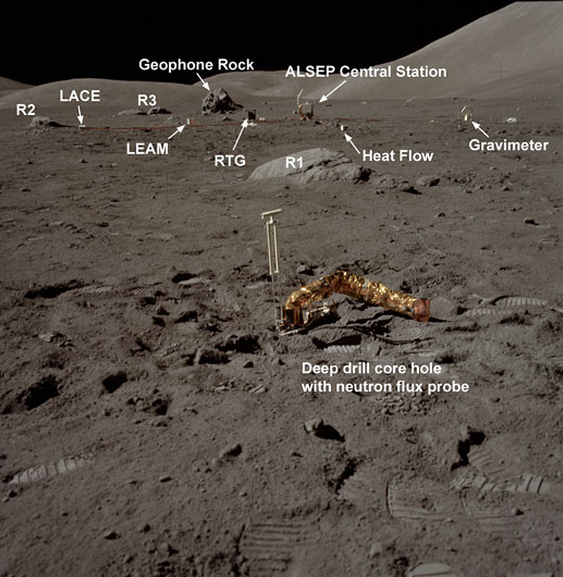
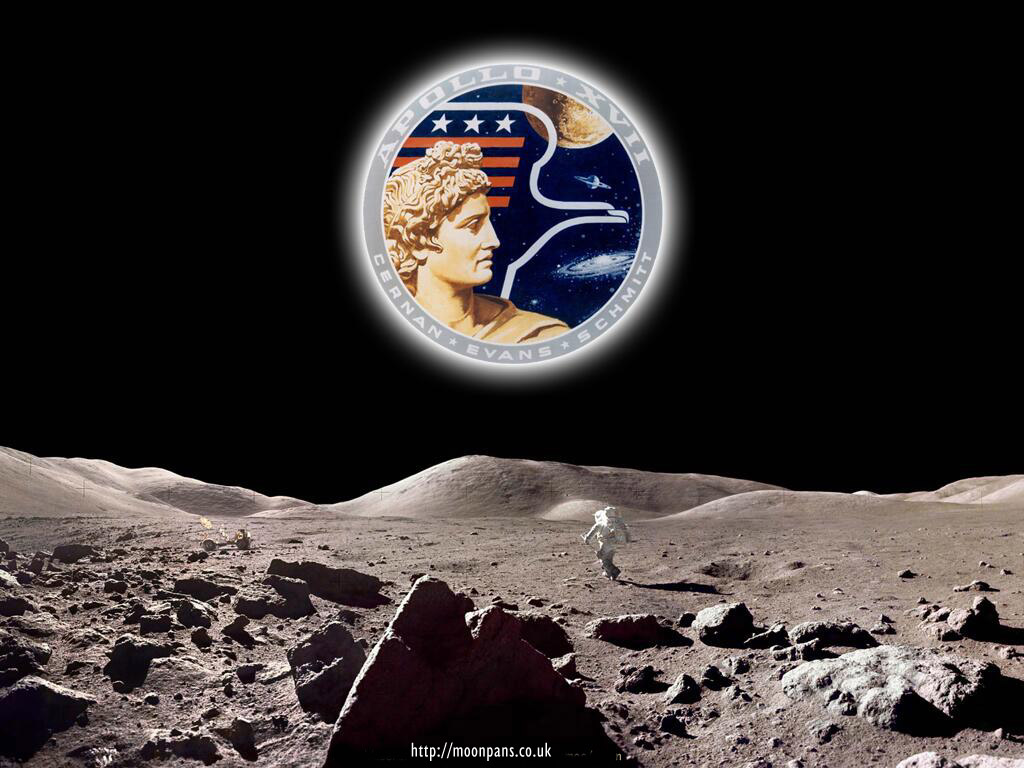



Knowing that it's quite rediculous to see Apollo programm emblems, wich started with dull cementoid coloured moon surface

and finished with nearly right tint at the end


And noting but Homeric laughter can be caused by feverish attempts to repaint so called "authentic lunar colour photographs", like this



edit on 11-4-2015 by viewer740 because: (no reason given)
originally posted by: viewer740
Well, the Moon is definitely not that deep orange-ish yellow as shown in this and some other images. That looks like the result of atmospheric influence when the Moon is low on the horizon. The atmosphere filters out primarily blue part of the spectrum, leaving the reds and yellows to pass through. When the Moon is high above the horizon, it appears silvery grey, just as it should.
It's strange that the colour analyses you brought up don't mention any blue colouration, which is fairly easily visible when you look at Mare Tranquillitatis (the sea of Tranquility) in binoculars or telescope. The blue colouration is due to high Titanium content in the minerals.
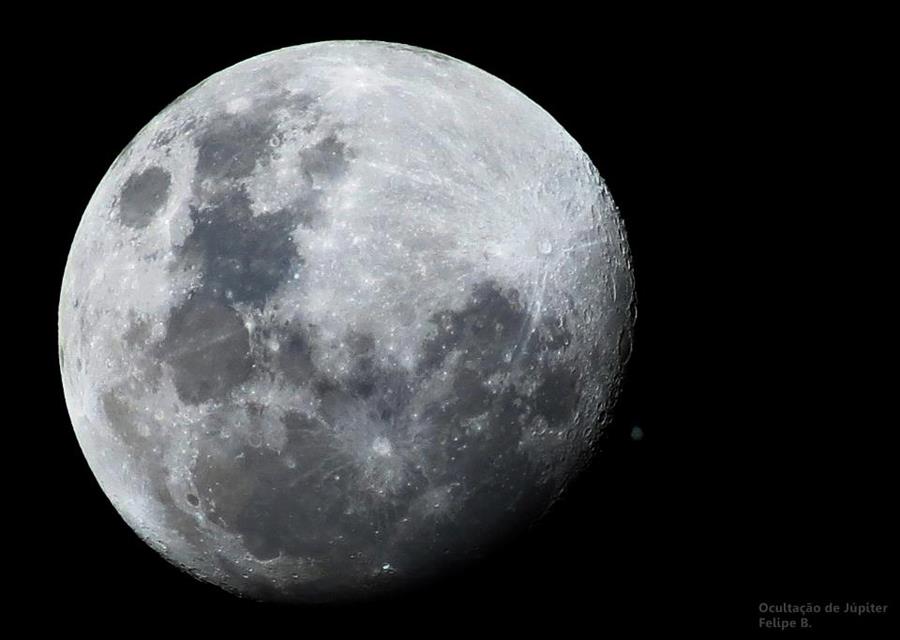
The Moon does have a lot of orange-ish colouration thanks to iron-rich basaltic material, but it also has quite a lot of the aforementioned blue, as well as pink-ish and yellow-ish from Aluminum-rich minerals in the lunar highlands.
I politely point you to the two posts I made earlier in this thread, with some quite good and relevant information: www.abovetopsecret.com...
edit on 12-4-2015 by wildespace because: (no reason given)
originally posted by: jazz10
Frequencies create colour so would it be right to assume each planets colour ( shining colour ) indicates the planetary frequency?
No, it would not be right. There isn't a "planetary frequency". Colors you see depend on the illumination spectrum and the material that's reflecting the light.
originally posted by: coastlinekid
Just throwing this in...
Someone edited that image to hide a patch of orange soil, which in fact was the purpose of why that photo was taken. earthsky.org...
a reply to: wildespace
Alas! I'm afraid I have to disappoint you, but rough reality have just sorted everything out - deep tawny yellow colour of the moon surface (with its rather low albedo ~0.07, like a garden soil ) is reliably established scientific fact and atmospheric influence plays no role absolutely in this case.
You didn't like previous photo of fallow coloured lunar hemisphere, that I posted above, and you tried to explain its “undesirable” colour by atmospherical filtering, but this colour is at perfect compliance not only with visual observations of L.Andrenko group (see the table at my previous post), but also with the data obtained by russian satellite Zond-7 at 11 August 1969.
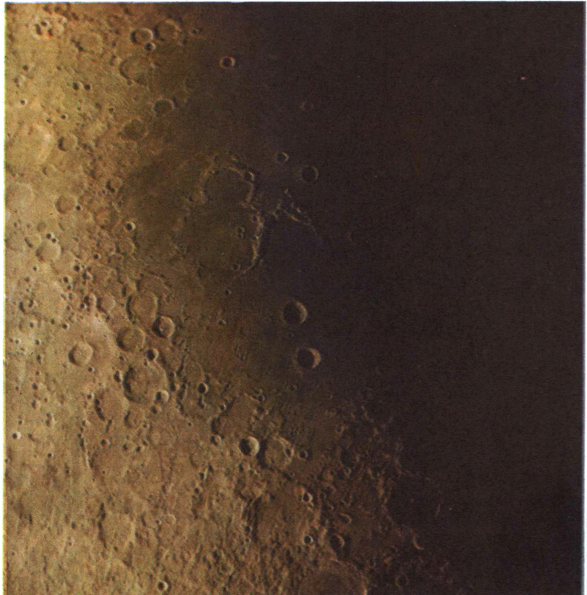
This photo was shot at distance of 10 000 km to the Moon and published in Science & Life, popular soviet/russian monthly magazine in its November issue 1969 with a total circulation of 3 million 100 thousand copies.
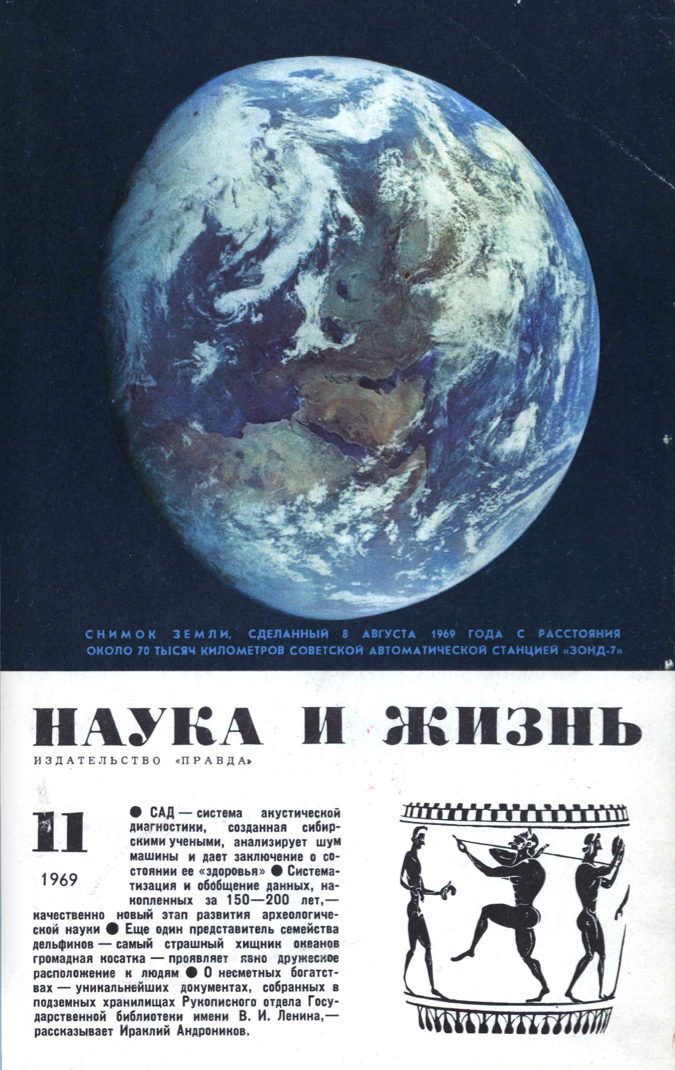
The picture could'n be taken by telescope because it shows lunar craters impossible to be seen from the Earth at such angle.
Besides, there are much more fresh authentic photos of yellow Moon less than one year old.
S'il vous plaît - Oleg Artemiev. Supermoon. Moonset on the Orbit
www.artemjew.ru...

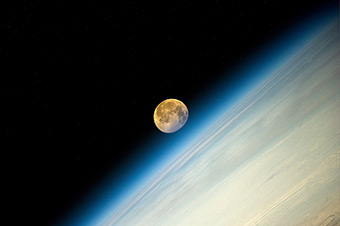
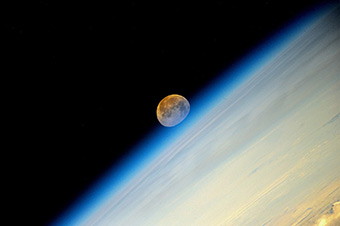
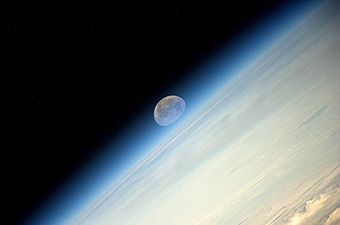


But if you, for instance, don't trust Russians or something else, I can catch your eye with NASA photo of non-grey Moon
nssdc.gsfc.nasa.gov...
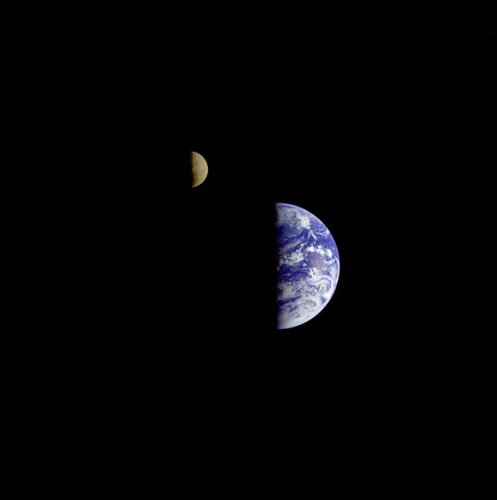
That looks like the result of atmospheric influence when the Moon is low on the horizon. The atmosphere filters out primarily blue part of the spectrum, leaving the reds and yellows to pass through. When the Moon is high above the horizon, it appears silvery grey, just as it should.
Alas! I'm afraid I have to disappoint you, but rough reality have just sorted everything out - deep tawny yellow colour of the moon surface (with its rather low albedo ~0.07, like a garden soil ) is reliably established scientific fact and atmospheric influence plays no role absolutely in this case.
You didn't like previous photo of fallow coloured lunar hemisphere, that I posted above, and you tried to explain its “undesirable” colour by atmospherical filtering, but this colour is at perfect compliance not only with visual observations of L.Andrenko group (see the table at my previous post), but also with the data obtained by russian satellite Zond-7 at 11 August 1969.

This photo was shot at distance of 10 000 km to the Moon and published in Science & Life, popular soviet/russian monthly magazine in its November issue 1969 with a total circulation of 3 million 100 thousand copies.

The picture could'n be taken by telescope because it shows lunar craters impossible to be seen from the Earth at such angle.
Besides, there are much more fresh authentic photos of yellow Moon less than one year old.
S'il vous plaît - Oleg Artemiev. Supermoon. Moonset on the Orbit
www.artemjew.ru...






But if you, for instance, don't trust Russians or something else, I can catch your eye with NASA photo of non-grey Moon
just as it should
nssdc.gsfc.nasa.gov...

a reply to: viewer740
I can see the moon with my own eyes, and it certainly is not that ruddy yellow color. When viewed through a telescope, the Moon looks mostly grey, but has tinges of blue and brown here and there. However, it does not look like the images you are showing, which clearly are in need color adjustment.
You really can't go by photographs, because there are many factors that can result in false color images -- the color film emulsion used, camera color processing might be wrong, and/or lighting conditions can affect what colors look like. That's true for film cameras, and even for digital cameras. Digital cameras use computer algorithms to determine color, and those algorithms could be fooled by lighting conditions (i.e., two pictures of the some object taken by the same camera could result in the object looking to be different colors in each image).
The problem with color fidelity, even with film images, was why the gnoman that was sometimes used during Apoloo geological study included a color reference chart. The color chart on the gnoman was included in some images so those images could later be properly color calibrated during processing to show the true color of what was there (true color that our eyes would see, calibrate with the gnoman color chart). Here is an image of the orange soil found by geologist-astronaut Jack Schmitt during Apollo 17 and the color-calibration chart on the gnoman. The image was color-calibrated to show the actual colors of the Moon in that location:
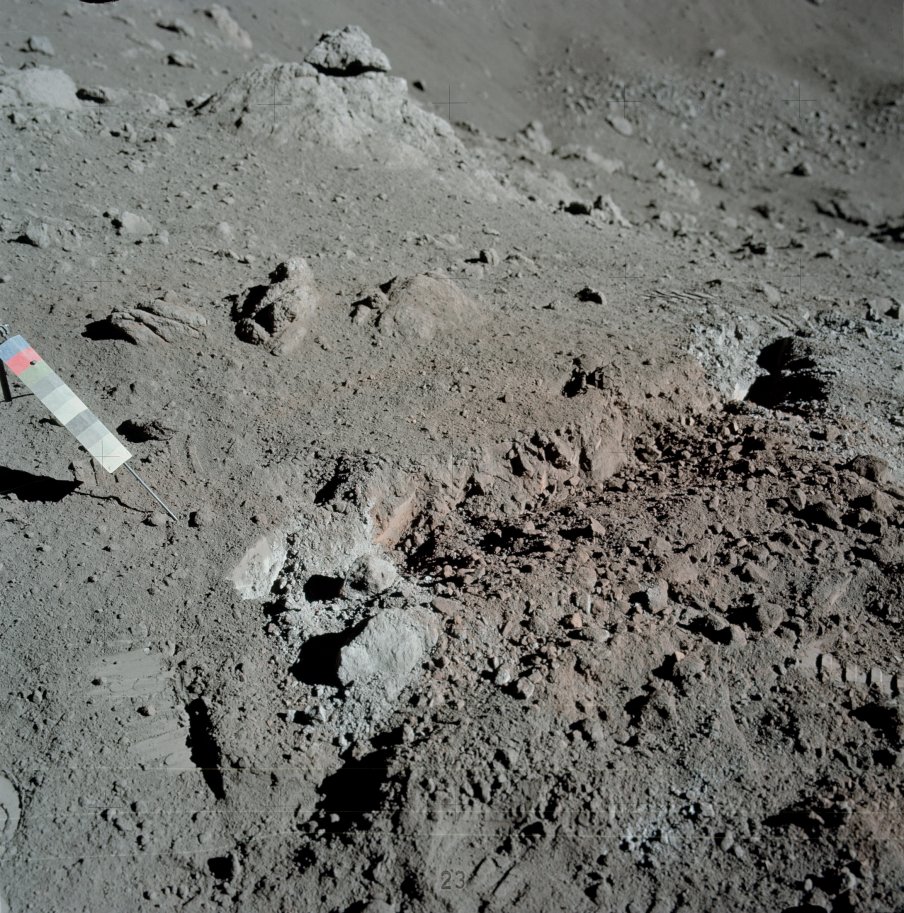
Link to original image:
history.nasa.gov...
Looking at your Zond 7 image that you posted above, I wonder what method they used to color-calibrate their images. Do you have any details on the color calibration methods used when they processed those images, or the type of color film emulsion used for the actual negatives?
I can see the moon with my own eyes, and it certainly is not that ruddy yellow color. When viewed through a telescope, the Moon looks mostly grey, but has tinges of blue and brown here and there. However, it does not look like the images you are showing, which clearly are in need color adjustment.
You really can't go by photographs, because there are many factors that can result in false color images -- the color film emulsion used, camera color processing might be wrong, and/or lighting conditions can affect what colors look like. That's true for film cameras, and even for digital cameras. Digital cameras use computer algorithms to determine color, and those algorithms could be fooled by lighting conditions (i.e., two pictures of the some object taken by the same camera could result in the object looking to be different colors in each image).
The problem with color fidelity, even with film images, was why the gnoman that was sometimes used during Apoloo geological study included a color reference chart. The color chart on the gnoman was included in some images so those images could later be properly color calibrated during processing to show the true color of what was there (true color that our eyes would see, calibrate with the gnoman color chart). Here is an image of the orange soil found by geologist-astronaut Jack Schmitt during Apollo 17 and the color-calibration chart on the gnoman. The image was color-calibrated to show the actual colors of the Moon in that location:

Link to original image:
history.nasa.gov...
Looking at your Zond 7 image that you posted above, I wonder what method they used to color-calibrate their images. Do you have any details on the color calibration methods used when they processed those images, or the type of color film emulsion used for the actual negatives?
originally posted by: Soylent Green Is People
a reply to: viewer740
I can see the moon with my own eyes, and it certainly is not that ruddy yellow color. When viewed through a telescope, the Moon looks mostly grey, but has tinges of blue and brown here and there. However, it does not look like the images you are showing, which clearly are in need color adjustment.
Exactly. If the Moon were indeed that tawny yellow colour, we would see it with our own eyes. It would also be indicative of very specific mineral composition, which would be studied in detail and made well known in scientific literature. But we see the Moon as mostly gray, and we know its mineral composition. A selection of photos that shows the brown Moon can't serve as the definitive test for the Moon's colour.
The ISS photos of the Moon near the Earth's limb show it yellow because the camera is adjusting for all the blue light of the Earth's atmosphere. As Soylent Green mentioned, there's a whole plethora of factors that can influence colours in the image. Even when observing with the naked eye, certain angles and lighting conditions can influence the colour perception, as shown by various Apollo astronaut experiences.
By the way, old Soviet colour film fades its colours with time, starting with blue. That leaves a mostly yellow/brown image. I have experienced that myself many times when watching old Soviet movies.
edit on 15-4-2015 by wildespace because: (no reason given)
a reply to: Soylent Green Is People
Concerning Zond 7 - it shot 35 pictures with the SKD camera and 300 mm objective, on 5.6 × 5.6 cm frames of color and panchromatic film. The details of colour calibration methods, type of film emulsion, exposition and so on are unknown to me.
However, the Zond 7 picture of the Earth
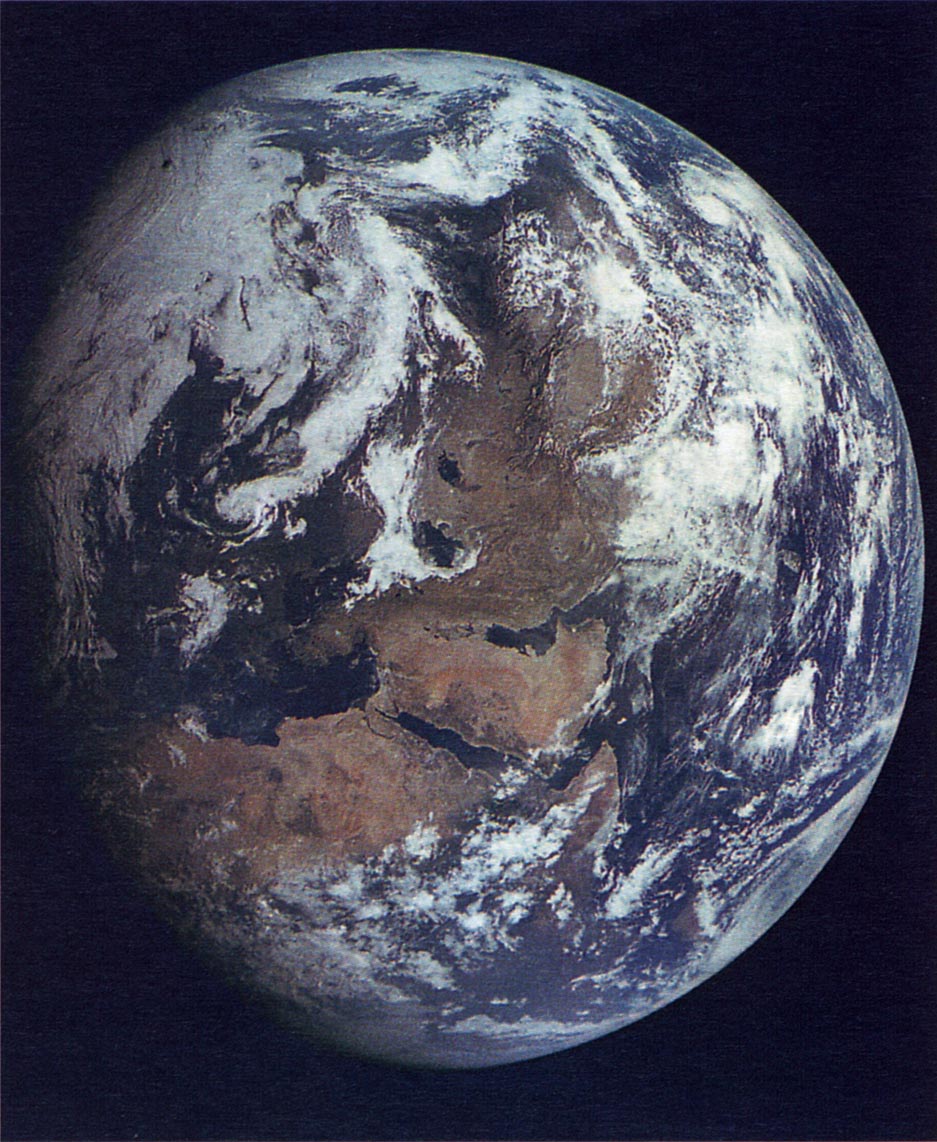
causes no questions and moon photos

mentallandscape.com...
mentallandscape.com...
mentallandscape.com...
show amazing compliance in hue with that allegedly of Apollo 11

The reason why human eyes don't see colour of the certainly non-grey Moon is the same that of colourless stars - intensity of light from those astronomic objects is too low to affect retina's cone cells, so only rod sels can be activated.
In short - all cats are grey in the dark.
Your personal telescope viewing..?
The vast majority of professional astronomers, including collaborators of Leonid Andrenko, I mentioned above
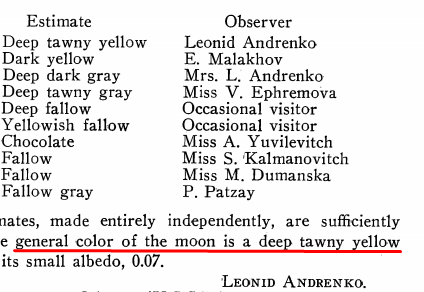
adsabs.harvard.edu...
for some reason saw dark yellow colour distinctly.
And the most persuasive argument which eliminates any sort of dispute is the reflectance spectral characteristics of lunar surface, obtained as far back as before 1954.
For exampe here is results of modern observations
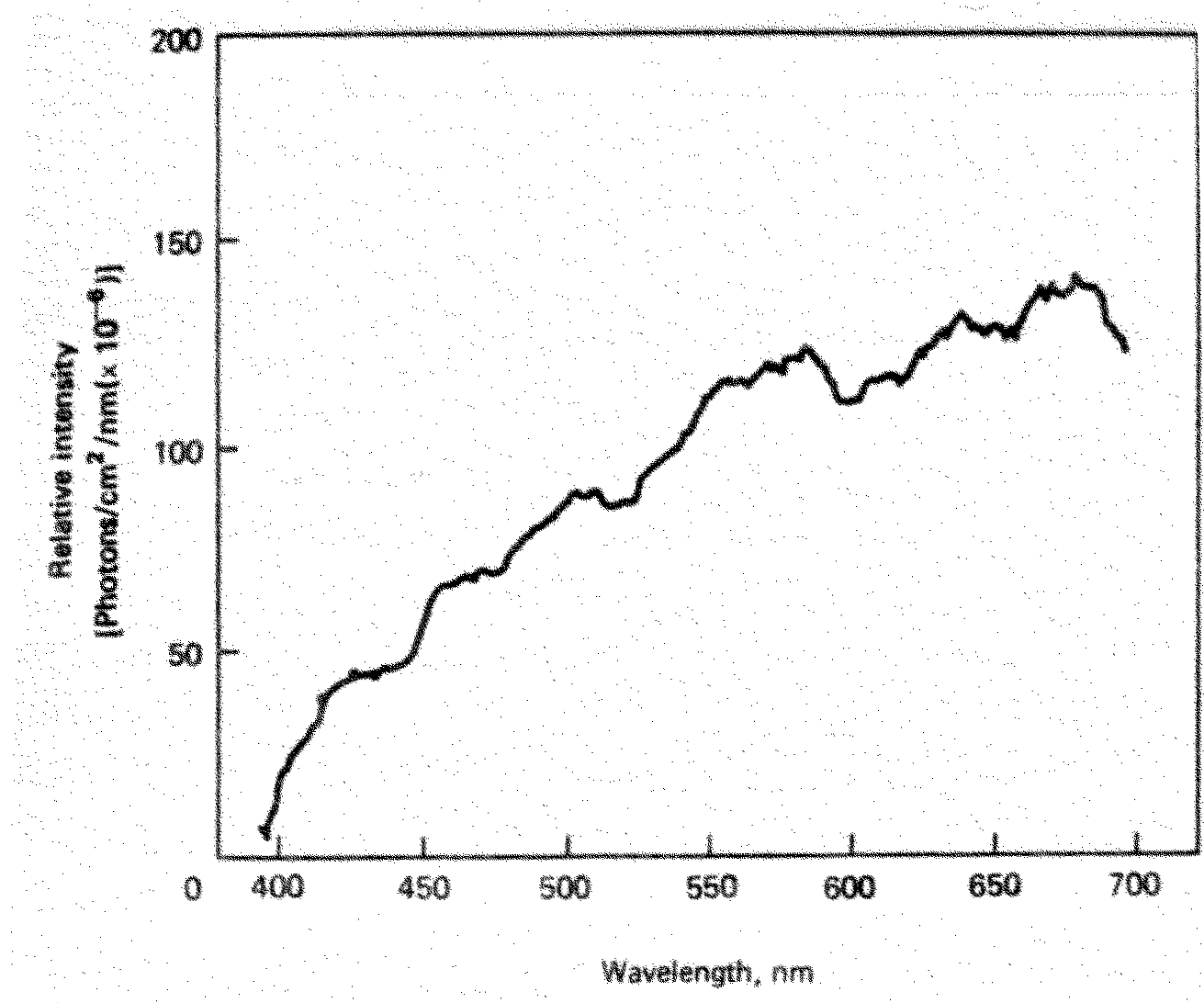
The spectrum of moon light, recorded at Eniwetok, 0200 hr., August 20, 1970. The moon was 15° from zenith. Note that the spectrum peaks near 660 nm.
www.biog1445.org...
The slope of characteristic illustrates neatly and precisely the yellowish brown colour, while - it's well known - different lunar areas have minor variations in colour.
Reconstruction of the lunar surface colour by its spectral characteristics, wich has been made by Leonid Konovalov
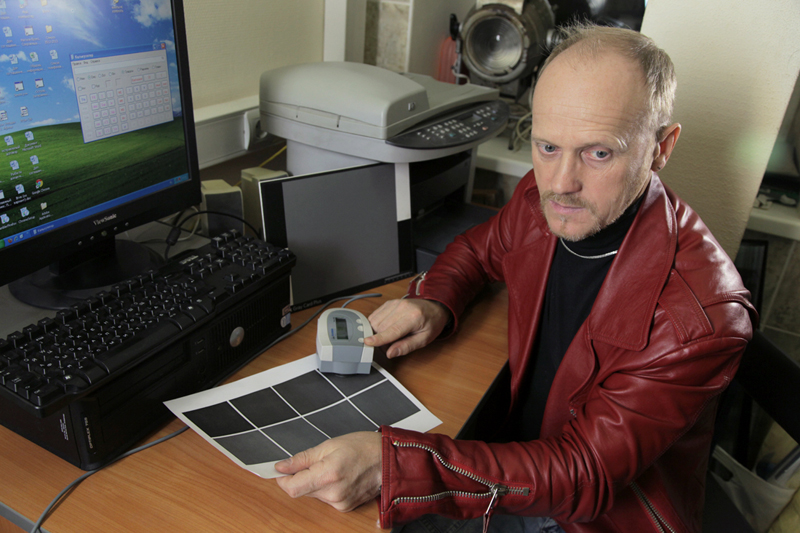
professional cinema camera operator, currently he is an associate professor at the department of Camera Department, Russian State University of Cinematography (VGIK), on subject Сhromatics,
www.aulis.com...
leonidkonovalov.ru...

demonstrates the tint near to that can be seen on numerous Moon photos.
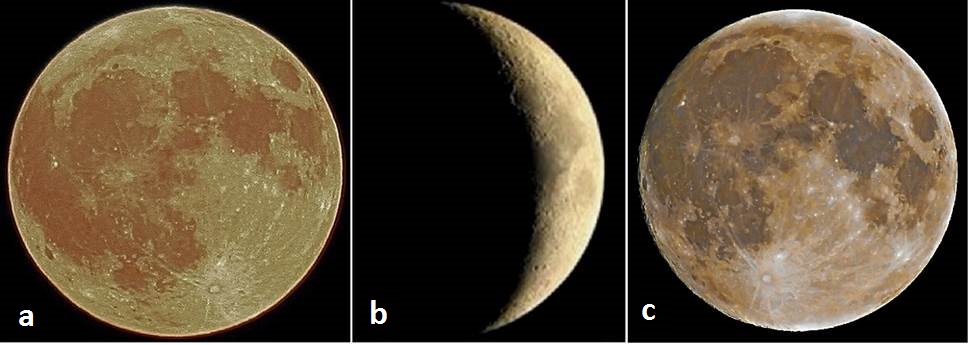
а) A.G.Solovian, professional photographer, Moscow, 23.05.2005, Canon EOS-20D, diaphragm F/5,6, ISO 400, F = 285 mm, exposition automatic.
b)photo of the Moon, shot from the Earth to color film in 2010 (autor under nickrname)
kosmos.of.by...
c) A.V. Kudriavets, Moscow, 7.10.2014. img-fotki.yandex.ru...
So the real Moon surface colour is not a subject for discussion anymore for a long time.
But the question inevitably arises - were have been shot next left part pictures


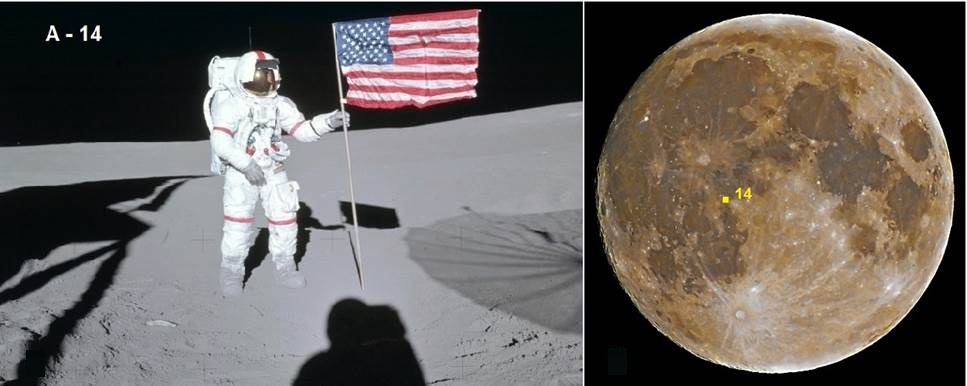
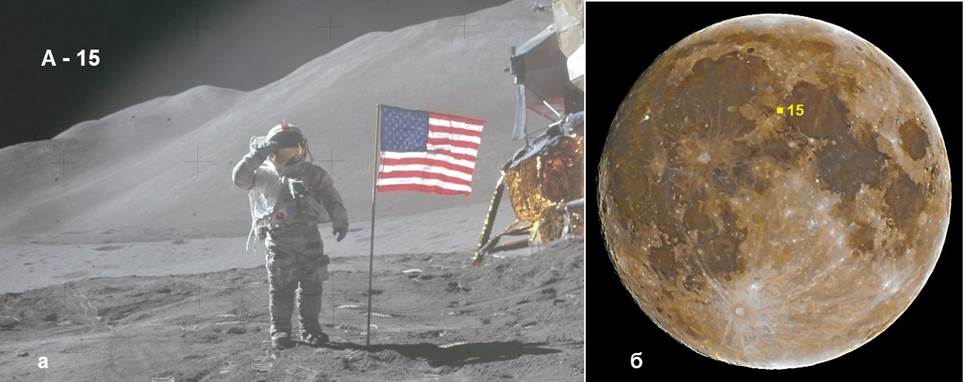
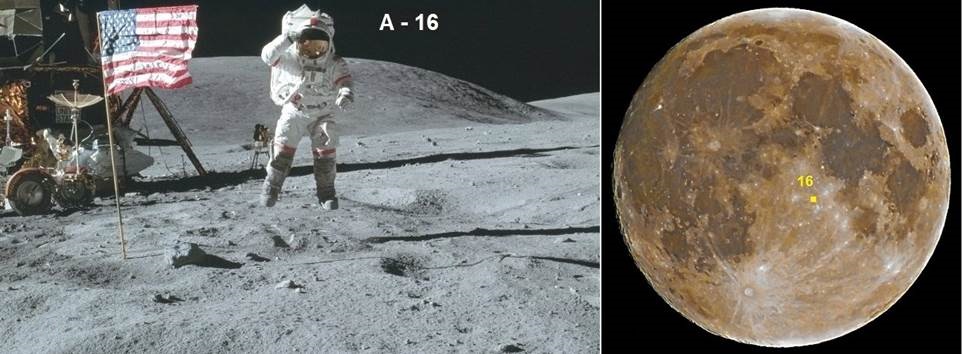
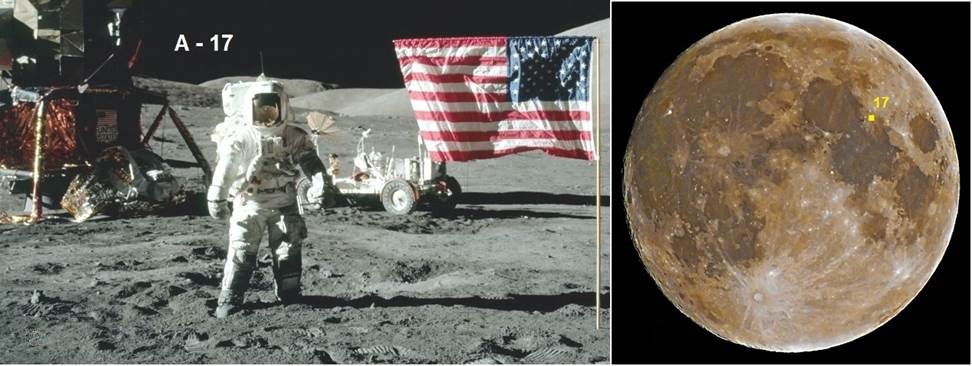
I'm sure anywhere but on the Moon!
Looking at your Zond 7 image that you posted above, I wonder what method they used to color-calibrate their images. Do you have any details on the color calibration methods used when they processed those images, or the type of color film emulsion used for the actual negatives?
Concerning Zond 7 - it shot 35 pictures with the SKD camera and 300 mm objective, on 5.6 × 5.6 cm frames of color and panchromatic film. The details of colour calibration methods, type of film emulsion, exposition and so on are unknown to me.
However, the Zond 7 picture of the Earth

causes no questions and moon photos

mentallandscape.com...
mentallandscape.com...
mentallandscape.com...
show amazing compliance in hue with that allegedly of Apollo 11

I can see the moon with my own eyes, and it certainly is not that ruddy yellow color. When viewed through a telescope, the Moon looks mostly grey, but has tinges of blue and brown here and there. However, it does not look like the images you are showing...
The reason why human eyes don't see colour of the certainly non-grey Moon is the same that of colourless stars - intensity of light from those astronomic objects is too low to affect retina's cone cells, so only rod sels can be activated.
In short - all cats are grey in the dark.
Your personal telescope viewing..?
The vast majority of professional astronomers, including collaborators of Leonid Andrenko, I mentioned above

adsabs.harvard.edu...
for some reason saw dark yellow colour distinctly.
And the most persuasive argument which eliminates any sort of dispute is the reflectance spectral characteristics of lunar surface, obtained as far back as before 1954.
For exampe here is results of modern observations

The spectrum of moon light, recorded at Eniwetok, 0200 hr., August 20, 1970. The moon was 15° from zenith. Note that the spectrum peaks near 660 nm.
www.biog1445.org...
The slope of characteristic illustrates neatly and precisely the yellowish brown colour, while - it's well known - different lunar areas have minor variations in colour.
Reconstruction of the lunar surface colour by its spectral characteristics, wich has been made by Leonid Konovalov

professional cinema camera operator, currently he is an associate professor at the department of Camera Department, Russian State University of Cinematography (VGIK), on subject Сhromatics,
www.aulis.com...
leonidkonovalov.ru...

demonstrates the tint near to that can be seen on numerous Moon photos.

а) A.G.Solovian, professional photographer, Moscow, 23.05.2005, Canon EOS-20D, diaphragm F/5,6, ISO 400, F = 285 mm, exposition automatic.
b)photo of the Moon, shot from the Earth to color film in 2010 (autor under nickrname)
kosmos.of.by...
c) A.V. Kudriavets, Moscow, 7.10.2014. img-fotki.yandex.ru...
So the real Moon surface colour is not a subject for discussion anymore for a long time.
But the question inevitably arises - were have been shot next left part pictures






I'm sure anywhere but on the Moon!
a reply to: wildespace
The origine of disgusting colour quality of old Soviet movies was bad fim copying technic.
Anew copied old movies and especially cartoons, without any computer processing, caused general admiration in due time.
...old Soviet colour film fades its colours with time, starting with blue. That leaves a mostly yellow/brown image. I have experienced that myself many times when watching old Soviet movies.
The origine of disgusting colour quality of old Soviet movies was bad fim copying technic.
Anew copied old movies and especially cartoons, without any computer processing, caused general admiration in due time.
Well this thread turned into a strange view of parallel earths real fast. I am suddenly questioning the very fabric of my reality as i stare at that
pretty golden moon. I mean, i am more then willing to accept the scientific explanations offered, but if we are choosing a moon color i am voting for
the Golden Moon.
# it, im writing a novel about that # now.......when you see the movie you will know its Thorneblood.
# it, im writing a novel about that # now.......when you see the movie you will know its Thorneblood.
a reply to: Thorneblood
You're never alone
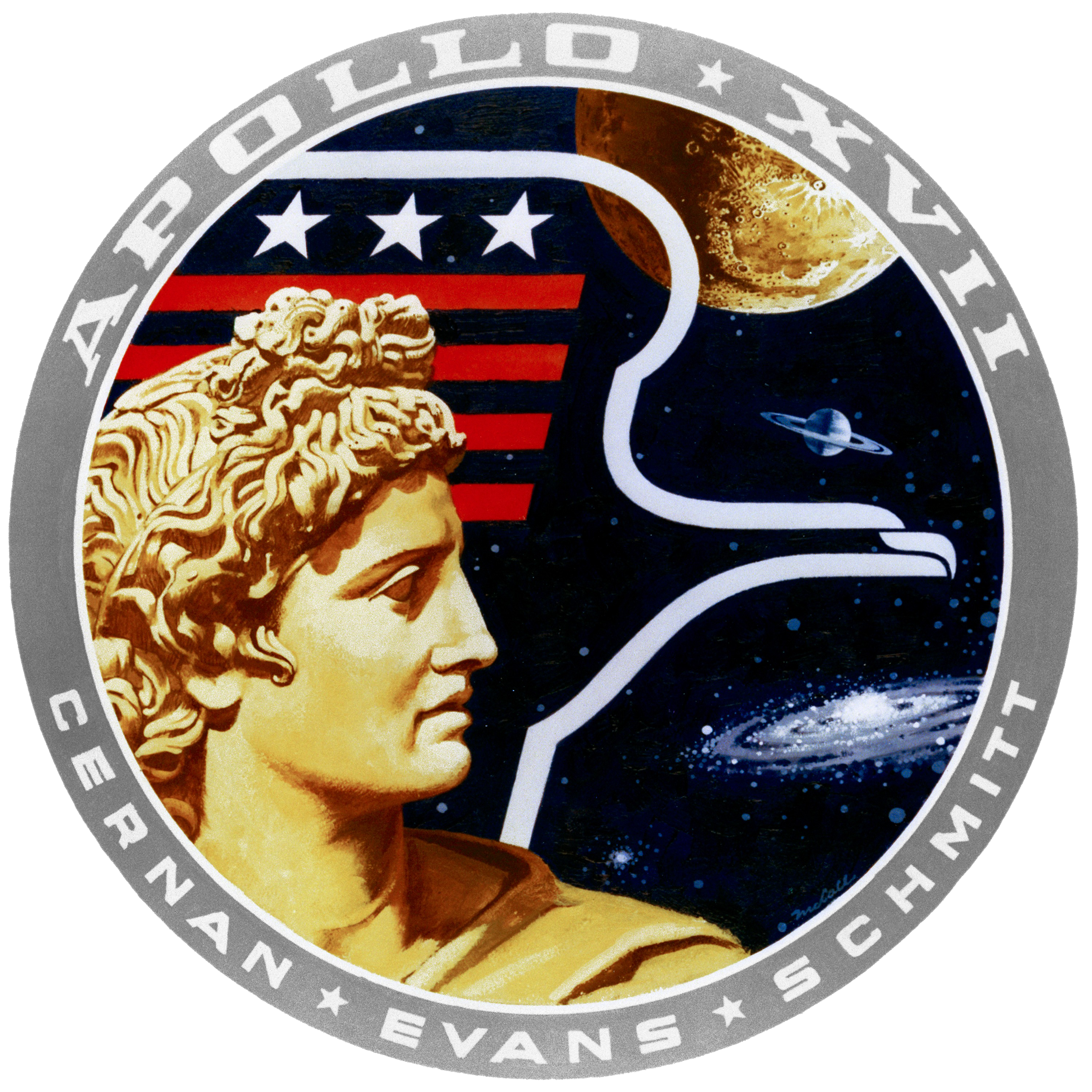

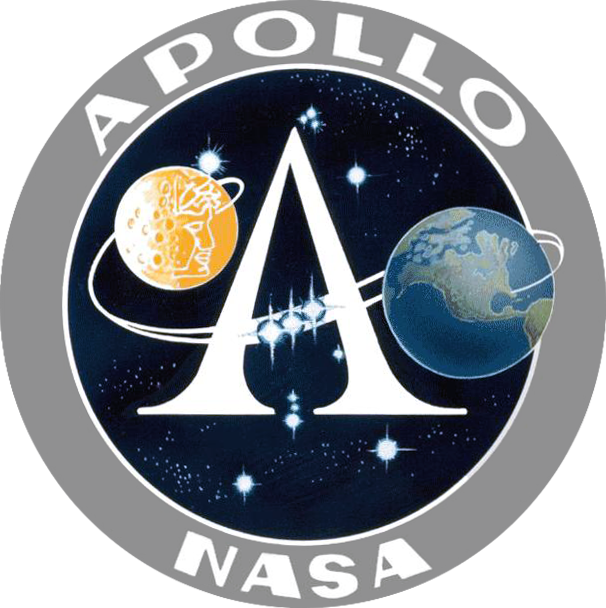
... if we are choosing a moon color i am voting for the Golden Moon..
You're never alone



Wow, "viewer740" certainly has his mind set on what he believe is true, to the complete disregard of any other evidence and scientific literature. I
shall leave it to him, but would like to just point out that the brightness of the Moon is certainly bright enough to activate cone cells. Even stars
are bright enough for this, as red and orange stars like Aldebaran or Arcturus can be easily observed as such.
On the topic of the real colour of the Moon, there is plently of genuine material on the internet (by genuine, I mean not being conspiracy-oriented), including links and images posted earlier in this thread. I run a Facebook group dedicated to this topic, please feel free to join: Colour of the Moon.
The Moon is mostly dark-grey, with iron-rich material having a reddish hue, titanium-rich material having a dark-bluish hue, and the aluminum-rich material in the lunar highlands having a pinkish hue. I think we can also see some greenish-yellow hue in the highlands due to a mineral called olivine.
On the topic of the real colour of the Moon, there is plently of genuine material on the internet (by genuine, I mean not being conspiracy-oriented), including links and images posted earlier in this thread. I run a Facebook group dedicated to this topic, please feel free to join: Colour of the Moon.
The Moon is mostly dark-grey, with iron-rich material having a reddish hue, titanium-rich material having a dark-bluish hue, and the aluminum-rich material in the lunar highlands having a pinkish hue. I think we can also see some greenish-yellow hue in the highlands due to a mineral called olivine.
new topics
-
Weinstein's conviction overturned
Mainstream News: 51 minutes ago -
Supreme Court Oral Arguments 4.25.2024 - Are PRESIDENTS IMMUNE From Later Being Prosecuted.
Above Politics: 2 hours ago -
Krystalnacht on today's most elite Universities?
Social Issues and Civil Unrest: 2 hours ago -
Chris Christie Wishes Death Upon Trump and Ramaswamy
Politicians & People: 2 hours ago -
University of Texas Instantly Shuts Down Anti Israel Protests
Education and Media: 5 hours ago -
Any one suspicious of fever promotions events, major investor Goldman Sachs card only.
The Gray Area: 7 hours ago -
God's Righteousness is Greater than Our Wrath
Religion, Faith, And Theology: 11 hours ago
top topics
-
VP's Secret Service agent brawls with other agents at Andrews
Mainstream News: 16 hours ago, 11 flags -
Krystalnacht on today's most elite Universities?
Social Issues and Civil Unrest: 2 hours ago, 7 flags -
Nearly 70% Of Americans Want Talks To End War In Ukraine
Political Issues: 17 hours ago, 6 flags -
Sunak spinning the sickness figures
Other Current Events: 16 hours ago, 5 flags -
Supreme Court Oral Arguments 4.25.2024 - Are PRESIDENTS IMMUNE From Later Being Prosecuted.
Above Politics: 2 hours ago, 5 flags -
Weinstein's conviction overturned
Mainstream News: 51 minutes ago, 4 flags -
Electrical tricks for saving money
Education and Media: 14 hours ago, 4 flags -
University of Texas Instantly Shuts Down Anti Israel Protests
Education and Media: 5 hours ago, 2 flags -
Any one suspicious of fever promotions events, major investor Goldman Sachs card only.
The Gray Area: 7 hours ago, 2 flags -
Chris Christie Wishes Death Upon Trump and Ramaswamy
Politicians & People: 2 hours ago, 1 flags
active topics
-
Supreme Court Oral Arguments 4.25.2024 - Are PRESIDENTS IMMUNE From Later Being Prosecuted.
Above Politics • 28 • : Threadbarer -
VP's Secret Service agent brawls with other agents at Andrews
Mainstream News • 45 • : network dude -
University of Texas Instantly Shuts Down Anti Israel Protests
Education and Media • 102 • : Threadbarer -
Weinstein's conviction overturned
Mainstream News • 10 • : xuenchen -
Chris Christie Wishes Death Upon Trump and Ramaswamy
Politicians & People • 8 • : network dude -
Nearly 70% Of Americans Want Talks To End War In Ukraine
Political Issues • 79 • : Consvoli -
Remember These Attacks When President Trump 2.0 Retribution-Justice Commences.
2024 Elections • 57 • : TzarChasm -
-@TH3WH17ERABB17- -Q- ---TIME TO SHOW THE WORLD--- -Part- --44--
Dissecting Disinformation • 670 • : cherokeetroy -
British TV Presenter Refuses To Use Guest's Preferred Pronouns
Education and Media • 159 • : 5thHead -
HORRIBLE !! Russian Soldier Drinking Own Urine To Survive In Battle
World War Three • 40 • : Myhandle

